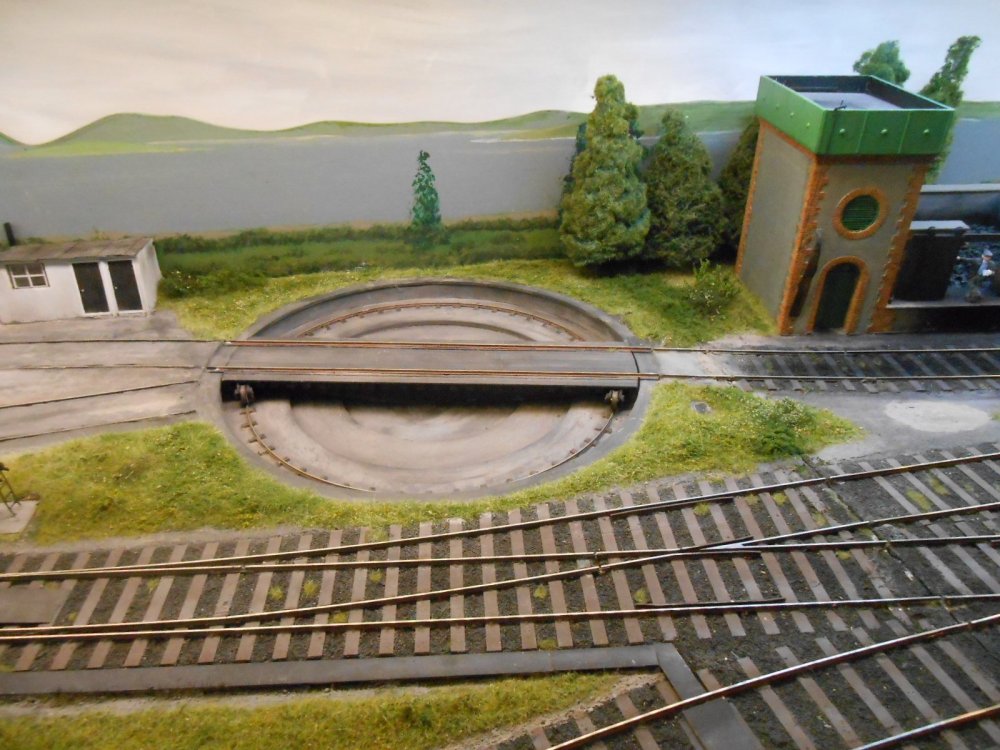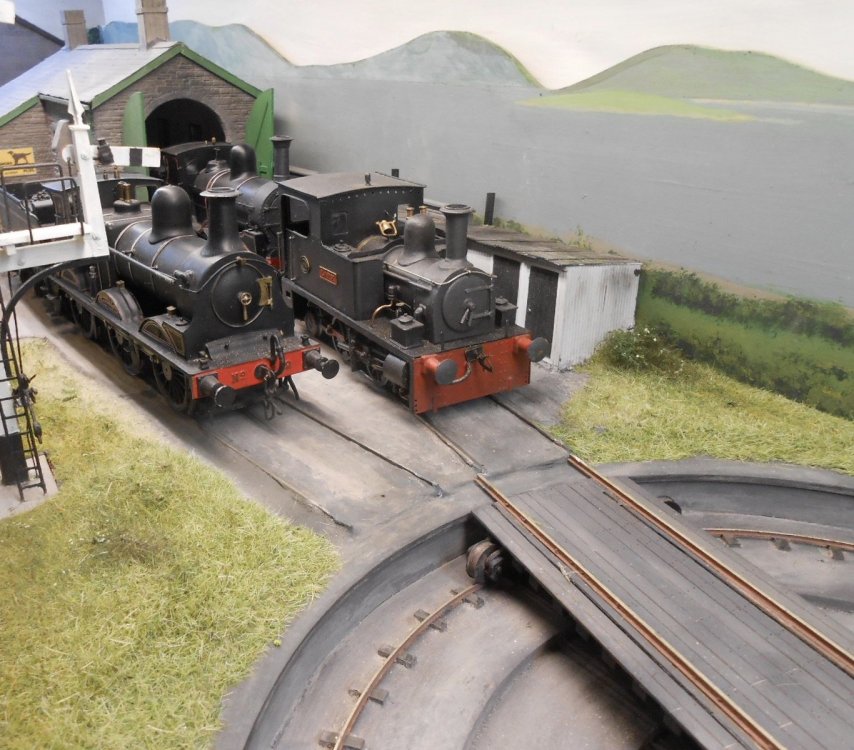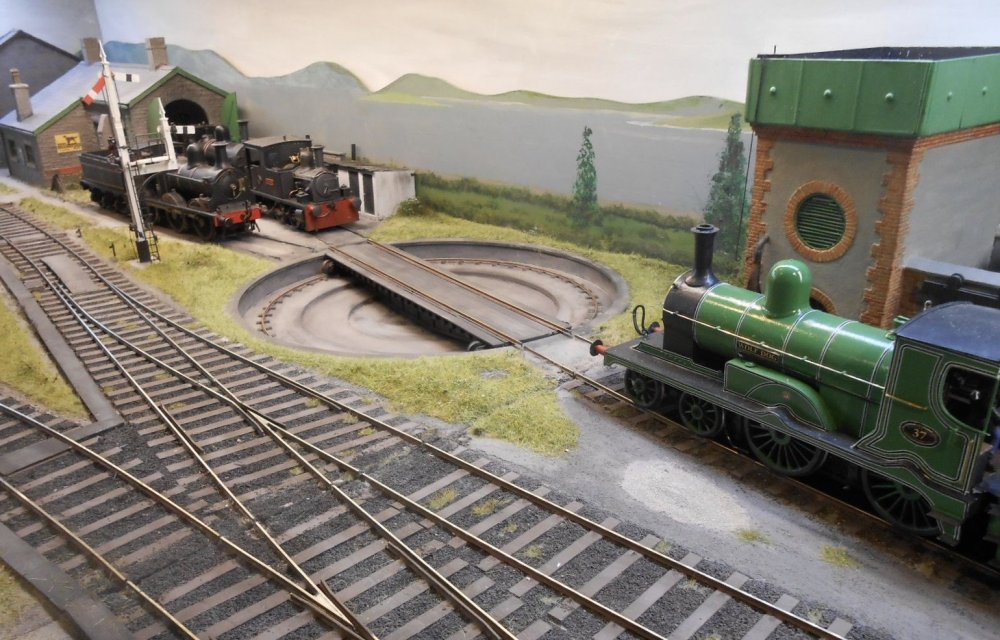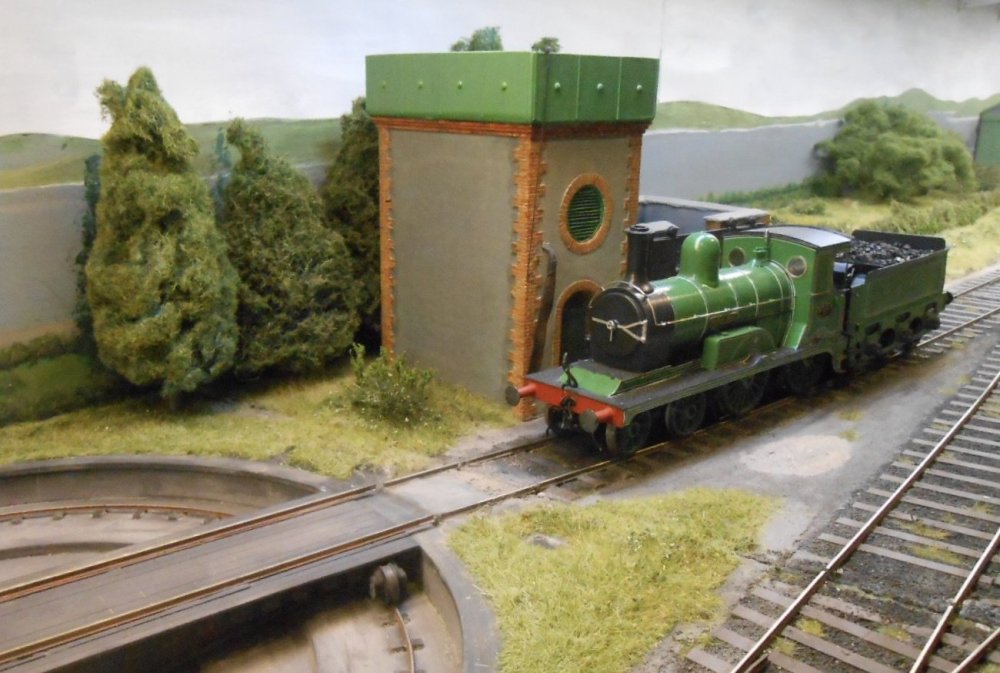
David Holman
Members-
Posts
4,328 -
Joined
-
Last visited
-
Days Won
117
Content Type
Profiles
Forums
Events
Gallery
Blogs
Store
Community Map
Everything posted by David Holman
-
Take a well versed historian, create a model railway and bring it to life with anecdotal scenes. It's like looking deeper into one of your books, JB.
-
Very fiddly and a pain to do. Not always (often, even) seen on layouts, but makes an important and subtle difference when it is. Fine work.
-
Fine effort Ken, especially when it started looking like it was covered in roofing felt!
-
Yep, keep the post coming!
-
The last couple of weeks have been busy with other stuff, including the need to get Fintonagh ready for the Bexhill Show, but attention now turns to ensuring Belmullet is ready for its debut at Uckfield on 16th & 17th October. At least, that is the plan anyway. Hence, the turntable has been bedded into the surrounding scenery, while I've done bits and pieces to disguise the baseboard joins. In addition, the leading edge of the baseboards has been given a hedgerow border, the latter made from rubberised horsehair covered in scatter material. In order to make the layout presentable, the front will be given a pelmet and side wings to frame the scene, while skyboards will raise the rear scenery by about 30cm. These will all be separate pieces that will need to break down for transport. Speaking of which, I also need to ensure the layout will fit in the car. This is a Skoda Karoq, which has removable rear seats, effectively turning it into a small van. However, with the baseboards crated up in pairs, plus trestles and supporting beams, pelmets, lighting and information boards at the front, some careful planning is needed - especially as, in having the layout with two distinct operating periods, there is quite a lot of stock to take with me too. It is at times like this, I find myself envying Angus and his 5p workbench as I'm looking at around 18-20 A4 box files.
- 179 replies
-
- 21
-

-

-
Mine arrived yesterday and very good it looks too, with plenty of inspiration for layout builders.
-
So, that's what you've been up to. On the strength of Rails to Achill, it goes straight to the top of my wish list. Amazon had three a minute ago. Now down to two...
-
More 3D printed sophistication! Ken, J-mo and now Fergalm. The traditional solution would be to cover everything in clay and then hand scribe all the stones, so love the creative thinking to design a roller - and dare I say, one that could well have a commercial application.As Fine work all round.
-
We seem to be entering a new age. Must confess that until recently, have been sceptical of 3D printing, simply in terms of the quality of models I've seen in the flesh, or in photos. Quietly though,, over the last couple of years, the fruits of CAD in laser cut kits, creating your own etches (Gordon Gravett has been doing this for a while) and now complete, printed models are really proving what can be done. Don't let anyone say it isn't proper modelling either, because for me at least, it is applying new skills to traditional ones. All power to your elbows, Ken!
-
Extraordinary, remarkable, amazing! There was me thinking you were 'just' having a bit of fun with CAD and here you are displaying a finished, painted model on some track and scenery. The Newman system says nothing about propulsion though. Is the slider being moved by hand, or could there be a conventional track and motor bogie beneath? Certainly has the potential for something very different.
-
Might be a bit harder to find a chassis and track for that, though it has been done at least once. There was a circular layout at Expo Narrow Gauge a few years back that came over from France based on the Lartigue.
-
Great to see the layout, not least because there is quality everywhere you look.
-
Proper job(s). The camera is indeed a great proof reader to help spot minor errors. Just like text, I fear the eye sees what it wants to see, especially at first, and discrepancies only get noticed later. As for typos, technology doesn't always help either. The cheap and cheerful Amazon tablet I'm doing this on has some very strange ideas about what I type and eighteen months in, I still find myself improving its vocabulary and expending mine on it. Initial problems included 'hooligan' for my surname. Quite liked that, but it has just changed hooligan to Sullivan's for some reason. It also prefers heartache to headteacher, my former job, which could also be described as apt at times. Anyway, great work Ken and will look forward to seeing what comes next.
-
Remarkable photos - many of which could easily grace another book.
-
And another...
- 266 replies
-
- 12
-

-

-
It is either a Sunday, or [as per jhbachill], there are a number of special trains that have just arrived and their locos are on shed for servicing. Either way, a few pictures of the newly installed and bedded in turntable
- 179 replies
-
- 21
-

-

-
Have made the first one public, hopefully and here's the other half of the sequence
- 266 replies
-
- 13
-

-
Damn! Will alter the settings later. However, it is taking about an hour to upload to YouTube. Is there a quicker way? Tried uploading straight to this site, but as well as being slow too, nothing there when it had finished.
-
After a long break, Fintonagh is on the road again next weekend at the Bexhill Show. For those of you who can't get to Sussex, here's a video. Will try to post some more later. https://youtu.be/wbBw9sZIirg
-
Slater's Plasticard do 7mm scale corrugated sheets, so worth checking their website to see if 4mm available.
-
Tasty. Well done Ken.
-
Ye gods, what is the world coming to? Time was, one use a camera to take pictures, nowadays a phone is pretty much all you need to do anything! Truth is, it's amazing what can be done. My first digital camera did everything my previous SLR could do and more. The Nikon Coolpix I use for model photos on this forum cost me fifty quid, yet has 12 mega pixels and does video. Shouldn't be allowed, especially as it can store over a thousand lower resolution pictures on a memory card the size of a postage stamp. Where does it keep it all??? Keep having fun JB, will look forward to seeing what transpires.
-
My pleasure. Good modelling deserves a wider audience. Martyn Welch does just this in his Art of Weathering book.
-
Subtlety personified and no small task either. Ever thought of doing a small photographic diorama? Just a piece of well ballasted and weathered track, like a siding with some surrounding weeds and a photographer backscene. Remove the tension locks and then pose a wagon. Suspect there could be more than a few who will struggle to decide whether it is a model or the real thing, me included.
-
B165 returning light engine is one of my favourites. It really captures the evening gloom.
.png.c363cdf5c3fb7955cd92a55eb6dbbae0.png)








